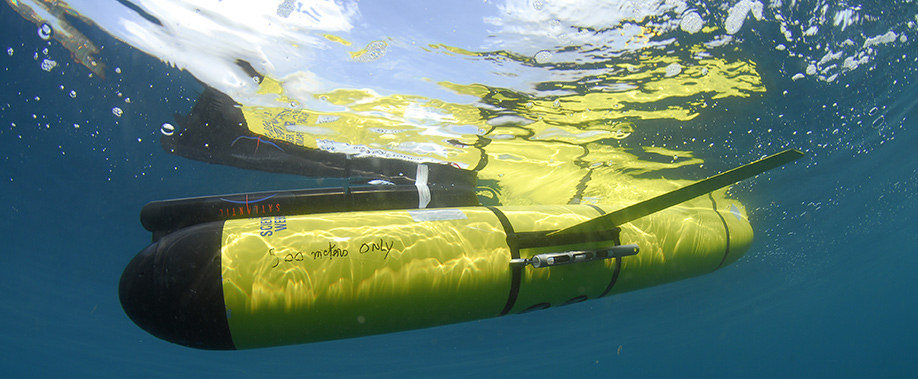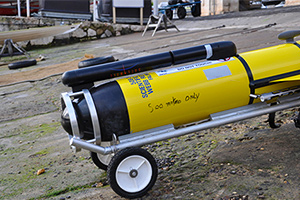Biogeochemical glider

Gliders are usually equipped with “basic” scientific payloads generally comprising temperature, salinity and oxygen sensors.
The OAO team develops and uses an improved version of this type, completing such “basic” sensor equipment with additional sensors. The OAO team first implemented optical and bio-optical (radiometers, fluorometers, backscattering meters) to develop the so-called bio-optical glider. The implementation of these sensors for additional oceanic measurements is essential to improve our understanding of the response of ecosystems to physical forcing (e.g. convection, stratification).
Since 2007, two improved “bio-optical” gliders (Webb reseach Slocum), named Tintin and Milou (“Snowy”) have been operated by the OAO team along an endurance line between Villefranche-sur-mer (French Riviera) and Calvi (Corsica).
In parallel, and as part of the SeaExplorer and then Vasque projects, OAO has been involved in the development of a new glider generation. The OAO particularly brought its experience on glider operation and know-how with respect to oceanographic sensors. The SeaExplorer prototype has been successfully tested along the same endurance line, which is rather well-monitored thanks to Tintin and Milou. Now, SeaExplorer will progressively replace Tintin and Milou along this line.
In order to refine our understanding of coupled physical and biogeochemical processes, it is important to increase the “portfolio” of key oceanic variables of biogeochemical interest measured by gliders. Therefore, additional measurement capabilities have to be implemented on the “bio-optical” gliders.
Such an implementation has become possible, thanks to the development and availability of a “miniature” optical nitrate sensor. Tintin, the first equipped with this sensor, carried out its maiden voyage as “nitrate glider” in early 2011. Similarly to this, and as part of the VASQUE project (follow-up the of SeaExplorer project), the nitrate capability will also be implemented on the SeaExplorer glider.
 Picture of the nitrate sensor implemented
Picture of the nitrate sensor implemented
on the top of the gliders “nose”.
(credit: C. Scheurle OAO/LOV) The scientific payload that we designed now comprises a nitrate sensor together with the “basic” and “bio-optical” sensors (e.g. fluorometers, backscattering meter). It corresponds to the most complete scientific payload available to date now implemented on the so-called “biogeochemical glider”. From now on, we will operate this biogeochemical payload either through a Slocum or a SeaExplorer glider.